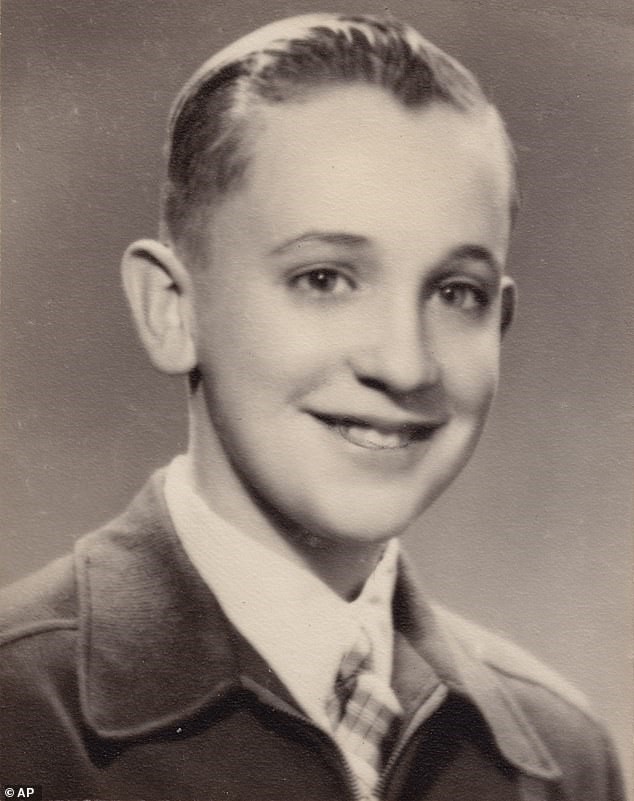By Daniel Johnson
When Jorge Mario Bergoglio was 12, he developed a crush on a girl called Amalia. Both sets of parents disapproved of their children forming an attachment so young but Jorge went ahead and proposed marriage anyway, according to Amalia.
She recalled with a laugh: ‘He said that if I didn’t say yes, he would have to become a priest. Fortunately for him I said no.’
It must count as one of the most momentous rejections in history, as Bergoglio not only went on to be ordained but rose to become head of the Roman Catholic church.
Pope Francis, who has died aged 88, was the first non-European to be elected to his office in 13 centuries.

A Jesuit from Argentina, Francis was also the most liberal, the most political and the most controversial of modern popes.
His informality, simplicity and charm won him many admirers.
His 12 years as Supreme Pontiff were marred by bitter divisions over doctrine between liberals and traditionalists.
The Pope sparked pandemonium by issuing a document advocating a relaxation of the Church’s ban on the sacrament of Communion for divorced and civilly remarried couples. Four leading cardinals publicly dissented and the issue continues to divide Catholics.
When Bergoglio became Archbishop of Buenos Aires in 1997, he placed great emphasis on evangelism and poverty relief in the city’s most deprived barrios (neighbourhoods), acquiring the nickname ‘the Slum Bishop’.
As pope he also broke with the politically conservative stance of his two predecessors, John Paul II and Benedict XVI, siding with the Left across a range of issues and proved more ready to compromise with authoritarian regimes.
In 2022, Francis courted controversy by refusing to explicitly condemn Russia after the invasion of Ukraine. Instead, the Vatican has maintained dialogue with the pro-Putin Russian Orthodox Church.
His conciliatory attitude to China, meanwhile, led to accusations that he had abandoned the underground Church there to persecution by the communist authorities.
Perhaps his most distinctive achievement was to shift the attention of the world’s 1.3 billion Catholics away from issues of personal morality, such as birth control and abortion, towards threats to the environment and the plight of the poor.
Having adopted the name of St Francis of Assisi, famous for his humility and love of animals, this ‘ecological Pope’ never ceased to remind humanity of its duty to preserve God’s creation.
Born in 1936, the future Pope grew up in a large family of middle-class Italian immigrants living in a suburb of Buenos Aires. His parents had left Mussolini’s fascist Italy before his birth, for political rather than economic reasons.
The young Jorge was not always wedded to the priesthood. As a young man, he once worked as a bouncer at a night club and was, reputedly, an enthusiastic dancer of the tango.
He went on to train as a chemical technician and, in 1958, at the age of 21, he had most of one lung removed after a serious bout of pneumonia. Despite periodic respiratory infections, plus colon and heart conditions in later years, Bergoglio was able to live a normal life.
Later that same year he did find his vocation: after going to confession, he was inspired by the priest to take the cloth. While a seminarian, he fell in love with another young woman and briefly considered dropping out but, in the end, persevered with his studies.
Once he became a Jesuit, Bergoglio rose rapidly in the Order to become a professor of theology and later the Jesuits’ provincial-general in Argentina from 1973-79.
In 2001, he was given the cardinal’s hat by John Paul II. By then he was already emerging as the best hope of the liberals within the Church elite to reverse the conservative restoration inaugurated by the Polish Pope.
When John Paul died in 2005, the conclave was divided between two rival candidates: Joseph Ratzinger, the late Pope’s right hand man and dean of the College of Cardinals, and Bergoglio, who attracted strong support from liberals and the southern hemisphere.
Ratzinger’s election as Benedict XVI was a triumph for traditionalists, but Bergoglio bided his time. Eight years later, in 2013, Benedict suddenly announced his resignation — the first pope to have done so in five centuries.
This was Bergoglio’s chance, despite his fragile health. By now 76, the Cardinal Archbishop of Buenos Aires soon emerged as the clear favourite. His election was greeted with joy by Catholics in the developing world, although, given his parents’ roots, Italians saw him as one of their own, after 35 years under first a Pole and then a German.
Francis became the first Pope for more than a century to live outside the papal apartment in the Apostolic Palace, choosing to reside in the Vatican guest house.
His predecessor, Benedict, now Pope Emeritus, lived nearby. Their relations were described as friendly, but tensions remained. Benedict continued to publish books and articles while conservative Catholics rallied around him.
For his part, Francis kept up a punishing schedule of foreign visits until the Covid pandemic forced him to remain isolated in the Vatican. Having put on weight after an operation for diverticulitis – inflammation of the large intestine – the increasingly sedentary Pope became reliant on a wheelchair.
His loss of mobility became evident at the funeral of Benedict in January 2023, when Francis presided over the Requiem Mass from his cathedra (episcopal throne) and blessed the departing coffin from his wheelchair.
Finally, his failing lungs caught up with him and he was admitted to the hospital on Valentine’s Day to be treated for bronchitis – especially dangerous given his existing respiratory ailments. He was later diagnosed with double pneumonia, and his condition was later described as critical.
As his condition worsened, there were rumours that the Swiss Guard had started funeral rehearsals. And today came the news that the Catholic faithful had dreaded for so long.
This article was originally published by Daily Mail online newspaper on 21 April 2025